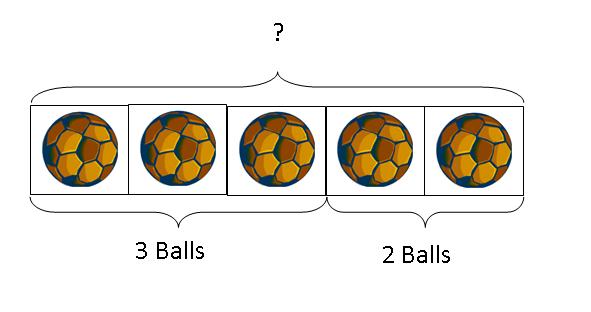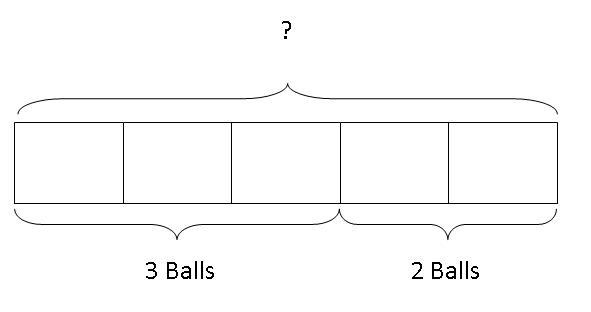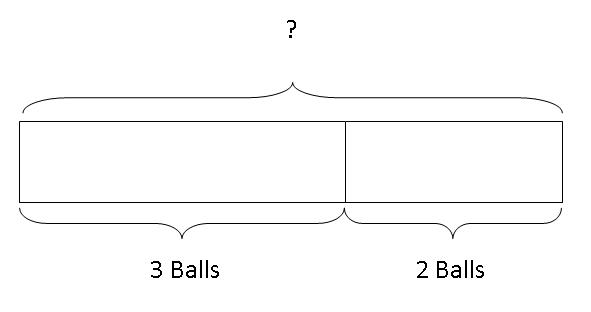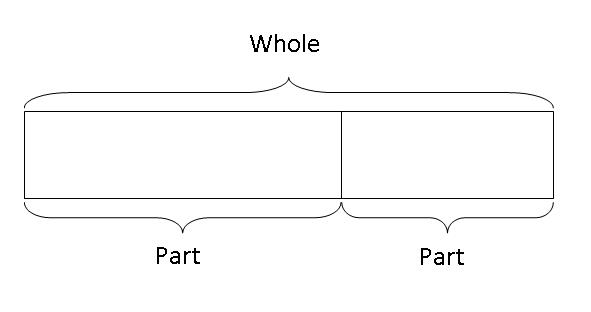The Part-Whole Concept
Comparison Concept and the
Change Concept . The
Singapore Math Primary Curriculum adopts a concrete-pictorial-abstract progressive approach to help pupils tackle seemingly difficult and challenging word problems. Mathematics Teachers in Singapore usually make use of concrete objects to allow students to make sense of the part-whole relationship between two or more parts. Once the pupils can visualize the part-whole relationships, they will then move on to put these relationships in rectangular bars as pictorial representations of the math models concerned.
To illustrate the part-whole concept, take a look at the following problem:
Ann has 3 balls. Bob has 2 balls. How many balls do they have altogether?
We can first give the child concrete objects, like 3 balls and another 2 balls, and let the child put the two groups of objects together to find the total.
When they are comfortable with adding concrete objects, we can then proceed to teach them to draw pictures of the concrete objects within boxes to illustrate the equation 3 + 2 = 5

After that, we can teach the kids to go on to draw the boxes without the objects.

Eventually, the equation can be visualised as a whole made up of 2 parts and the pupils can easily see that to find the whole, they just need to add up the 2 parts.

So, 3 + 2 = 5
Therefore, they have 5 balls altogether.
Hence, we can see that the relationship among the 3 quantities (the whole and 2 parts) can be summarised as follows:

To find the whole given two parts, just add the two parts together:
Part + Part = Whole
To find one part when we are given the whole and the other part, just subtract the given part (or known part) from the whole.
Whole - Part = Part
Go To Top - Part-Whole Concept
If you want us to send you our future Modelmatics eZine that would inform you on the latest article in Teach Kids Math By Model Method, do an easy sign-up below. Subscription is FREE!




